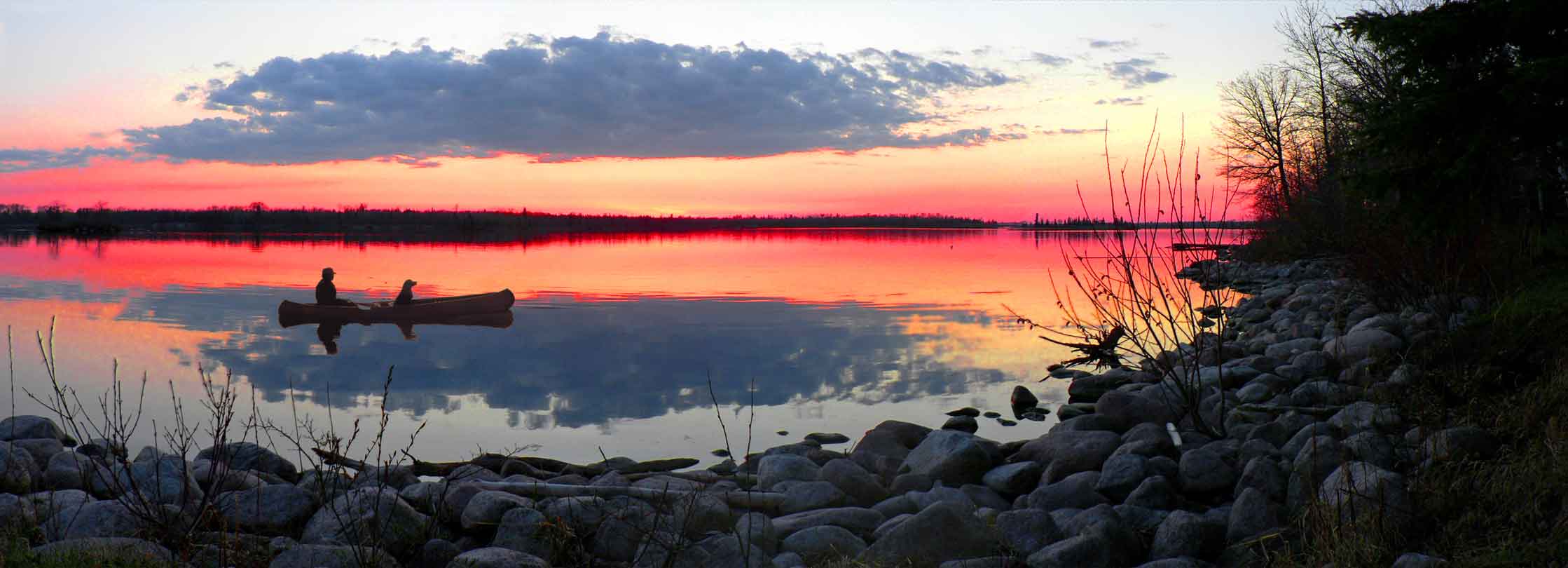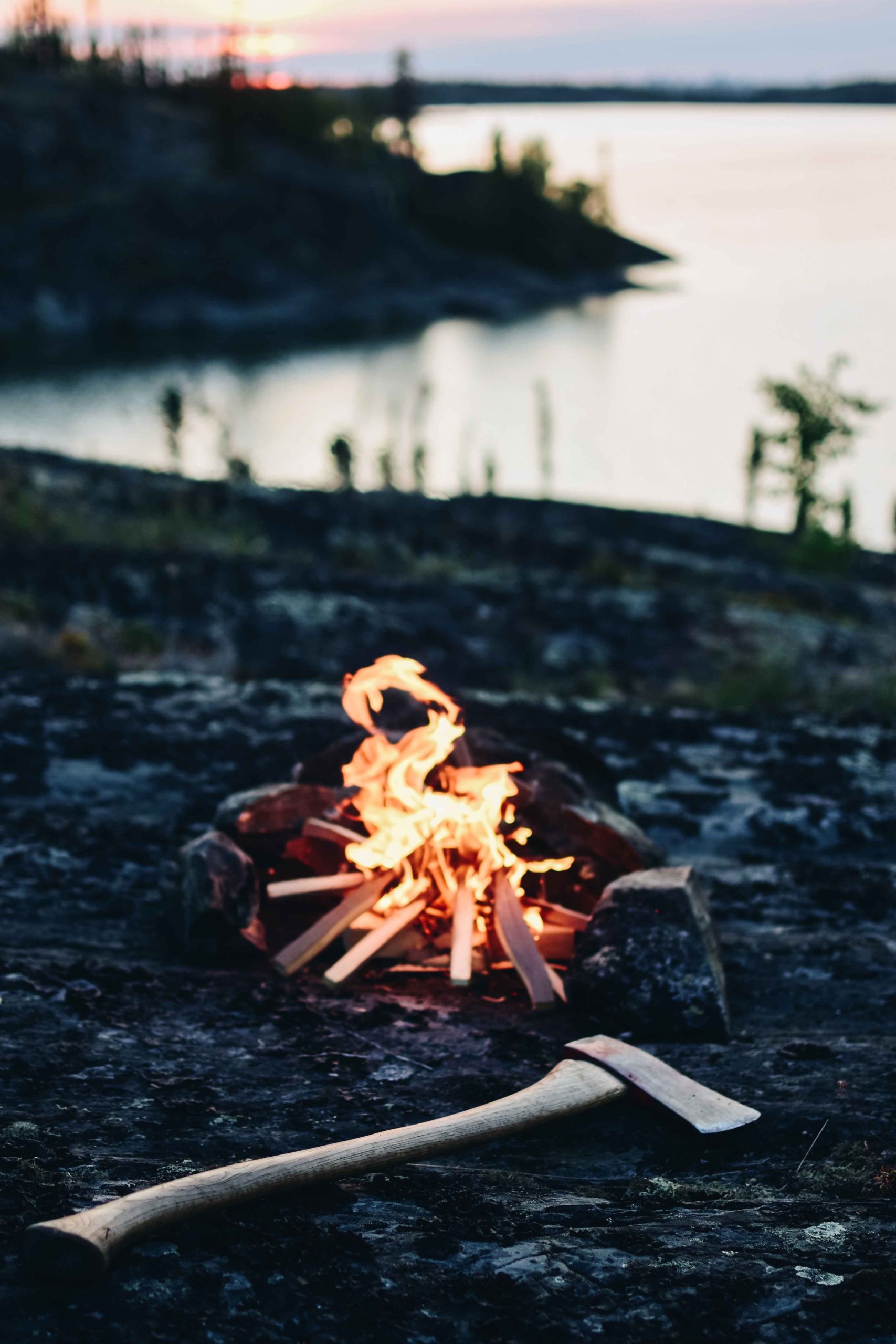Safe at Home Lunch and Learn: Wilderness Survival Tips
By Kaitlin Vitt, Digital Marketing and Outreach Coordinator
Do you want to explore Manitoba’s wilderness but are worried about what to do if you get lost?
Sherman Kong from Maple Leaf Survival is here to help.
Through Maple Leaf Survival’s private and public courses, Kong has been teaching people the fundamentals of wilderness survival since 2009.
“The most important thing in a survival situation by far is your mindset,” Kong said in a recent CPAWS Manitoba webinar. “Your mind will create literally a heaven or hell for you.”
One thing that can help you have a more confident mindset when in the wilderness is putting together an essential kit. While you can buy a survival kit off the shelf, Kong said they are often gimmicky, so it’s best to create your own. Read on for Kong’s recommendations of what to include in an essential kit and answers to some common questions about survival training.
How Do You Know When to Switch to a Survival Mindset?
Whether it’s backcountry camping or a day walk, you could end up in a survival situation, Kong explained. Maybe you’ve been hiking the same trail for years, but it just so happens that one day when you go, you twist your ankle, or maybe you spot an animal, get spooked, take off and now you’re lost.
There are many unexpected reasons why you could find yourself in a bad situation. Before you go, it’s important to tell someone where you’re going, who you’re with, what you have with you and when you plan to come home. If you don’t, a rescue team is almost useless since they wouldn’t even know where to start looking.
It’s also important to keep in mind that just because someone knows where you are, if the weather is bad a rescue team may not get to right away anyway, so you need some survival skills to survive.
If in a survival situation, once you find a place that is safe, stay where you are. Ideally, this is a place where you have access to lots of materials and resources.
So really, you should change into your survival mindset as soon as possible.
How Do You Keep a Fire Going in Wet Conditions?
“A fire needs heat, fuel and oxygen,” Kong said. “Those three things work in harmony.”
It’s important to have a strong start when building a fire. You can put down a platform of sticks that will keep your tinder and kindling off the ground. This also allows air flow from the bottom.
If there’s snow on the ground, you want to dig down as much as possible to get to bare earth.
When you think about fire, it goes straight up — there’s a thermal column. If the ground beneath the fire is wet, the fire constantly sucks up that moist air into itself, which is why you might find your fire constantly fighting against itself.
So if you can’t avoid a wet ground, try putting a platform down, and hopefully you can get your fire big enough for it to overpower the moisture that’s being sucked up into your fire.
What to Pack in a Survival Kit and How to Use It
The most essential thing about a survival kit is that you have it with you. So Kong recommends you keep it small and easy to carry — most of the items can fit in a one-litre water bottle!
Strip it down to the essential items you always want to have on you that you cannot effectively replicate in nature. While you may be able to improvise out in the wilderness, it’s not ideal, plus you’re relying on so many factors out of your control, like the weather.
Instead, pack an essential kit. And don’t worry — if you pack right, you can still pack light. Everything in the essential kit Kong recommends can fit in a shaving kit. That way, you can easily toss it in your car, backpack or boat.

Photo by Ron Thiessen.
The Essentials
Tarp and/or space blanket: If bringing tarp, choose a brightly coloured one in case you need it to send a signal. Some people want something more compact than a tarp, which is where a space blanket is handy. You can use these highly reflective blankets as protection from wind and rain, to bounce back heat from a fire and in signalling.
Buff neckwear: You can use a neck gaiter to filter water, as a beanie to keep your head warm and for dressing wounds, just to name a few examples.
Cordage: For parachute cord, wrap up the cord yourself instead of bringing along the entire package it comes with. Dental floss also makes good cordage since it’s strong, so pick up a couple extra samples the next time you’re at the dentist.
Water purification tablets, such as Aquatabs: They weigh about as much as a Band-Aid and take up just as much space.
Iodine: You can pick up a small bottle from a drugstore. In your wilderness adventure, it can be used to treat minor cuts and scrapes if needed, plus it can purify water — just add three drops to one litre of water and wait 30 minutes.
One-litre Nalgene wide-mouth water bottle: If you have a wide-mouth bottle, you can add the majority of your essential kit into the bottle, keeping it dry and safe. A one-litre bottle makes water purification super easy if you use tablets, since many tablets are specifically for one litre of water.
Pot for water: Some metal pots are a bit bulky, but you can find one that your Nalgene bottle nests perfectly in. Boiling water is a foolproof method to purify water since you don’t have to worry about any filters or pumps. But it’s still a good idea to have a backup in case starting a fire to boil the water over is out of the question.
LifeStraw: For another water purification option, the LifeStraw is easy to use and will likely last you a lifetime. All you do is dip it into whatever water source available and sip through the straw.
Lighters: While matches are an option, lighters take up less space than matches for the number of strikes they’re good for. Brightly coloured ones are best so that you can see them easily in case you drop them.
Fire steel: A modern-day flint and steel, a fire steel works for about 4,000 strikes and isn’t affected by weather, unlike a lighter or matches. A fire steel produces sparks that you would use to ignite tinder.
Medication: Make sure to have any medication you need in your essential kit as well. Stuff your pill container with cotton balls to maximize space and to ensure the cotton balls stay dry.
Whistle: You can make way more noise with a whistle than by shouting, plus it’s less exhausting. Like other items in your kit, make sure your whistle is brightly coloured.

Compass: While there are multiple navigation methods — using the stars, your watch or the shadow stick method, to name a few — having a compass with you takes the variables, like weather, out of the equation.
Tweezers: These are useful in case you get a sliver, which could happen when chopping wood for your fire.
Magnifying glass: This can be used to start fires or to help get slivers out.
Pocketknife: In a wilderness survival situation, the best knife you have is the one you have on you. It doesn’t have to be super fancy — you just have to have some sort of cutting implement. Be weary of pocket knives that are gimmicky with too many parts to them — this can affect the overall structural integrity of the knife itself. Plus, when the majority of your survival equipment is part of your knife, if you lose the knife, you lose everything else it comes with.
Fixed-blade knife: A fixed-blade knife is one that doesn’t fold up — it’s in one piece. This knife is a bit more robust for heavier tasks.
Sharpening device: This is necessary to keep your tools sharp.
Chapstick, bug spray, headlamp: All of these things will make you feel more comfortable in a survival situation. A headlamp is a great option for a light since your hands can be free. And as long as the light is 300 lumens or higher, you can use it to signal to aircraft.
Permanent marker: In a survival situation, generally speaking you want to stay in the same spot, as long as it’s safe to do so. But if for some reason you need to leave where you are, having a permanent marker with you will let you write messages — on the window of your vehicle, for example — to say where you’re going. You can also draw a map or keep track of a water source by writing on your arm with the marker.
Signal mirror: You can signal to someone from about 20 miles away in ideal situations. If it’s sunny, you can use a signal mirror. Otherwise you can use smoke during the day, flames at night or a high-powered light, perhaps one with a strobe function, at any time of the day.
Tick key: Kong personally likes to bring along a tick key, which is a flat, lightweight device used to remove wood ticks because, as he says, no one likes to touch wood ticks.
First aid kit: Kong says he has a fairly small first aid kit, but it always includes a tourniquet that can be used for serious arterial bleeds (you can buy through CTOMS) and QuickClot that can be used for other heavy bleeds that aren’t arterial.
That’s right, all of this can fit into a small bag, like a shaving kit. And really, most of it can fit in your waterproof, crush-proof, floatable water bottle.
“It may not seem like a lot, but trust me — if someone were to suddenly drop this out of the sky for you in a survival situation, this would be a godsend,” Kong said.
Kong recommends putting especially critical goods, like a signal mirror and a multitool, outside of the bottle, in the shaving kit, so that you can quickly grab them if necessary. The shaving kit also comes in handy so that you have a place to dump all the items in your water bottle if needed.
Safe at Home in Nature
This webinar was part of our Lunch and Learn series to encourage Manitobans to safely spend time outdoors, appreciating the beauty of our wild spaces, as part of our Safe at Home efforts.
Nature has been here for us during the pandemic.
Parks became a refuge for people seeking safe spaces to escape the stress of the world. Provincial campsites were fully booked on summer weekends. Trails were so popular parking lots overflowed onto highways.
CPAWS Manitoba wants to help maintain and grow this positive connection to nature. That’s why we’re providing resources and online events that help connect people to nature from the safety and comforts of home. Let Manitoba’s wild spaces be a refuge for you and your family.



